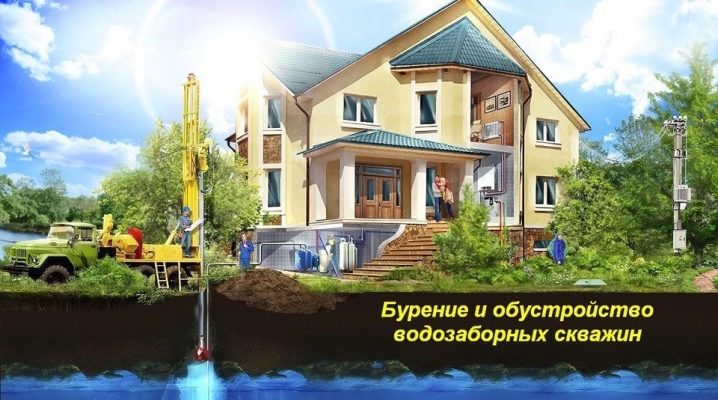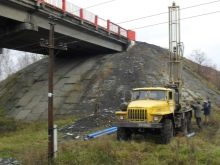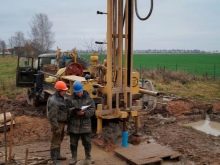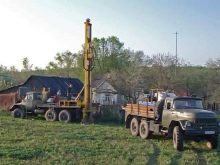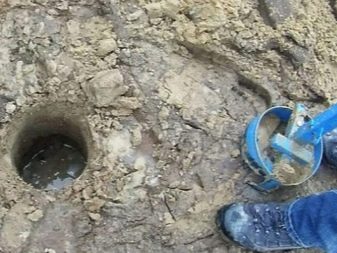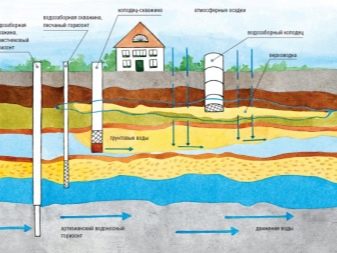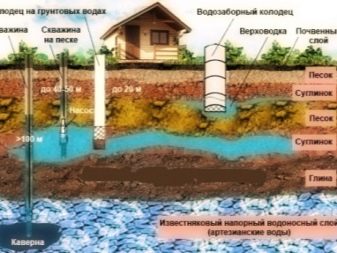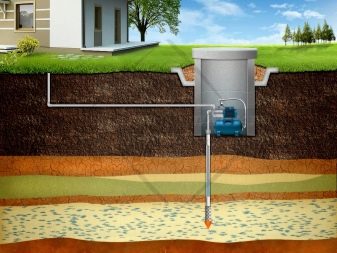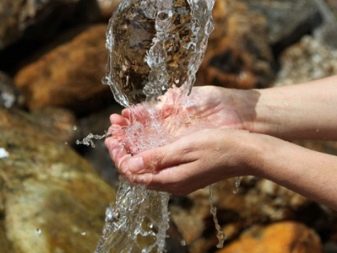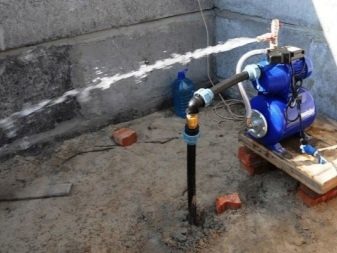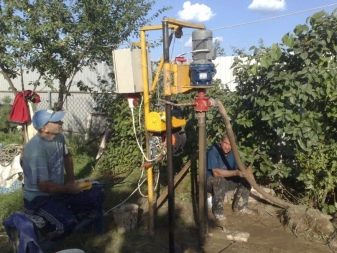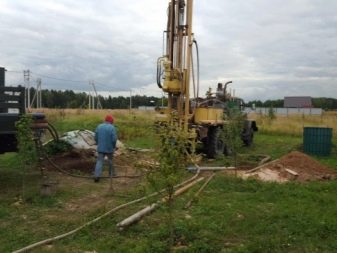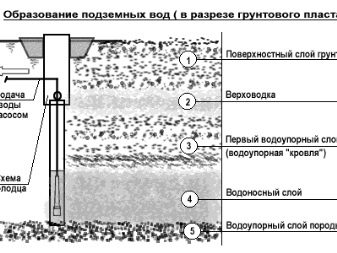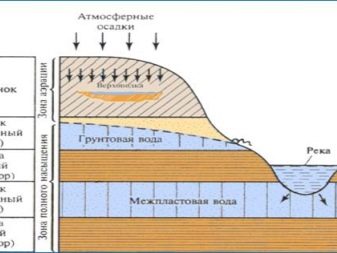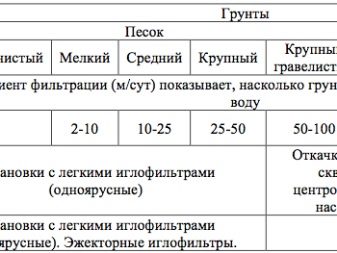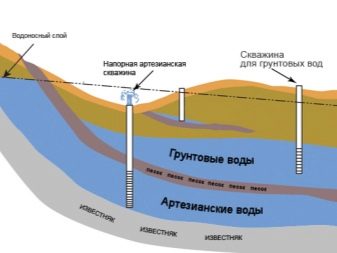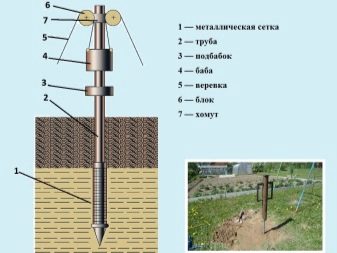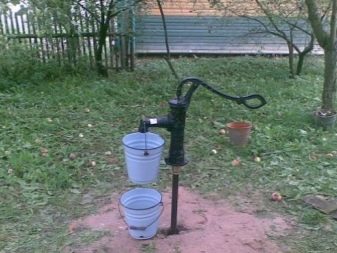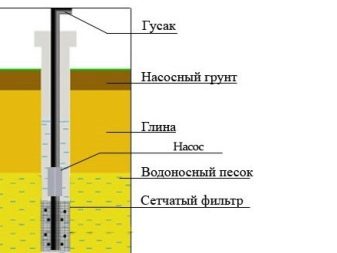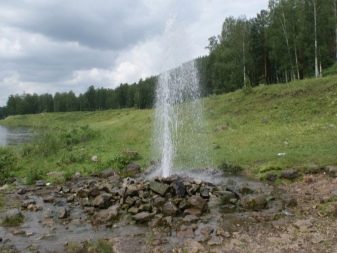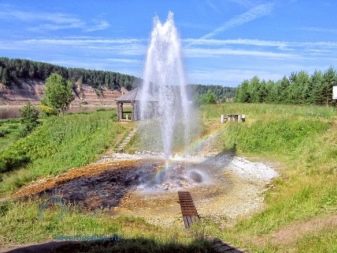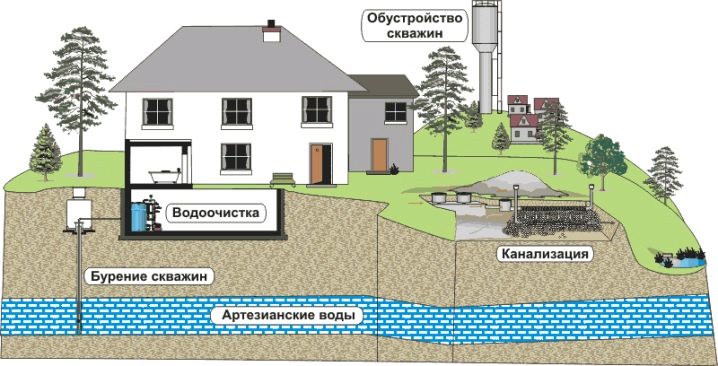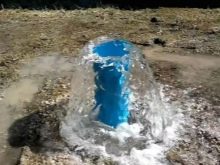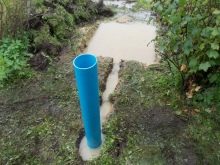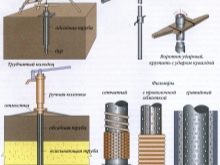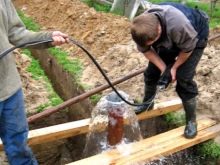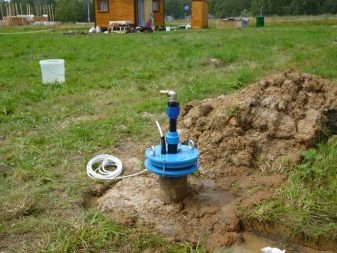Drinking Water Depth: Calculation Methods and Drilling Steps
Many owners of private houses refuse from an apartment in a high-rise building precisely in order to be one hundred percent owners of their own lives and not depend on anyone. However, modern communications usually still expose certain conditions of their own work, so you have to depend, for example, on the delivery schedule of the same water. A private well for drinking water in the garden plots completely solves this problem, provided that the depth of the well is calculated correctly for this area. What should be the depth of the well, not everyone will be able to calculate, although there are no difficulties here, so it is worth considering how to measure the depth.
Factors
There are several factors that literally affect how deeply you have to dig.As a rule, a serious machine can get to the water almost anywhere, however, a preliminary calculation is important, because it may turn out that a private well for water will not be cheaper than an oil well, although of course it will not bring a similar profit.
In order to correctly predict the cost of work and, if possible, reduce it, several points should be considered.
- Depth of the main water layers plays a key role in determining the depth of a well. The depth of occurrence is highly dependent on the geological structure of the selected area, in particular, because of where the rocks are located that do not allow water to go deeper. This moment can be determined using geological analysis of the terrain. Another way to find out the specifics of local groundwater is test drilling. But you should not blindly rely on the positive experience of even your closest neighbors, because with their well they can touch the very edge of an underground reservoir, which is already lacking in your area.
- Plot relief can tell where exactly you shouldn't drill. As a rule, the upper layers of the soil are soft rocks that are well water-flowing, but also easily erode or subside.This means that in the nearby lowlands, the water is more likely to be closer than on top of a nearby hill.
- Anticipated groundwater use also leaves its mark. Drinking water, as a rule, lies quite deep - a considerable thickness of the soil layer is required to filter it. In this case, the upper layers of the water lie much closer to the surface, but their practical application is limited only to watering the vegetable garden.
- It’s important not just to get to the water, but also getting it in sufficient quantity. As a rule, the deeper the well, the higher its productivity, but in this case the depth is determined not so by meters, as by the number of layers traversed. So, from a well lying in the upper layers of the soil, it is possible to extract no more than 1 m³ within two hours, and a well that has reached the sandy layer gives three times more water. The most productive is the deep artesian well, issuing several cubic meters of water every hour.
Check the water-bearing capabilities of your site can be relatively inexpensive, because test drilling in most regions of Russia will cost less than one thousand rubles.
Ways to determine the depth
Although you should not consult with your neighbors regarding the depth of the well, you can focus on the trees planted on your own plot. It is no secret that plants germinate only where there is enough water for them, therefore heat-loving plants can suggest the presence of water layers of shallow.
- So, trees like alder, bushes of meadowsweet, forest reed indicate that only meters are left before the water, usually not more than three.
- Loch and Sarsazan also indicate a relatively shallow occurrence, which, however, can reach five meters.
- Chii, wormwood and alfalfa indicate the relative proximity of water, but other plants usually say nothing.
It should be noted that the depth of wells permitted in Russia, which do not require any permission, is only 5 meters. Water can be found at such a depth, but there it is rarely drinking. However, in practice more depth is allowed, but for wells from 15 meters and more, registration is considered mandatory.
The most reliable way to determine the depth of a future well is a trial core drilling. In fact, the same well is being made, only in a much smaller size and with little expenditure of money and effort. As soon as the auger reaches the wet sand, the drilling stops. Experts evaluate the performance of the well, observing how quickly the hole will fill with water. If the demonstrated performance is enough, the source is immediately settled, otherwise the minimum depth of the water is considered insufficient, so the masters drill further.
It should be noted that the fact of reaching water in sufficient quantities is still not a success, if the customer’s goal is to search for water specifically for drinking.
After drilling, it is advisable to take water samples and measure the content of various substances in the laboratory to determine whether it is suitable for human consumption. Only if the laboratory gives a positive answer, you can stop drilling and fully equip the well.
Layers of groundwater
The stated methods for calculating the depth suggest preliminary accurate measurements, however, even at the planning stage, the customer can roughly imagine for himself how deep his well will be.The fact is that all aquifers are classified into three types, and the depth of each of them, sometimes differing by ten meters, is still not so fundamentally different in different regions to allow separate classifications.
Depending on personal needs, the landlord may set a task for drillers to achieve one of the three main layers.
- Most upper The aquifer is commonly referred to as overhead, its depth is on average 4–7 meters, although it can vary in any direction depending on the terrain. The water here is not retained due to the waterproof layer, as due to the banal lack of solar heat and light, so there is relatively little moisture here, and it is not suitable for drinking - it is too cloudy and with admixtures of sand. If you just need to water a small garden, then such a well is enough, especially since permission is not required for it.
- Main the drinking layer is located at a depth of about 10–20 meters, although, again, it all depends on the specifics of the area. Water that is filtered in multimeter soil layers is already much cleaner, however, when digging a well for drinking water, the well is usually equipped with additional filters.It should be noted that they are not omnipotent, therefore various impurities, including harmful ones, may be present. This negative trend is especially noticeable in the spring, because this season is characterized by floods, so it will be useful to check the water sometimes with the efforts of sanitary epidemiological stations.
- Artesian springs located at a depth of 25 meters or more, sometimes reaching 60 meters, although the most famous sources are much higher than even this figure. Such water is rightly considered to be the cleanest and safest, because to such depths the harmful products of human or animal life are lacking.
Varieties of wells
Most often, the types of wells resonate with what of the above layers tend to get drillers. There are three types of wells, as well as aquifers, with each species having its own unusual characteristics designed to ensure maximum water quality.
- So-called Abyssinian the well involves the use of a top layer, but in a somewhat purified form. To do this, the well penetrates somewhat deeper than the traditional bedding of a water-pipe - the approximate depth of the well eventually amounts to about 8–13 meters.The walls of the well are laid out with a waterproof material so that the water pipe does not get into the source directly from the upper layer. As a result, only that water supply gets into the well, which, going down, passes through several more meters of the natural “filter”, therefore such water can even be drunk and used for cooking. Actually, it is this type of wells most often found in rural areas.
- So-called well on the sand drilled about 15–20 meters deep. The layer of soil at this point is usually already passed, as a result of the drill a few meters deep into the sandy layer, which is traditionally rich in moisture. At the same time, sand is considered to be the best natural water filter, therefore the end of a well drilled by the auger method specifically rests against it, so that water gets into the source only after passing sand. The groundwater produced in this way is suitable for drinking, even in unboiled form.
- For artesian well the main point is the maximum depth. This cannot be considered a well whose depth is less than 15 meters,and even in the household plots there are springs not less than 50 meters deep, and for industrial production large companies are digging even two hundred meter wells. Water from such a source not only has no restrictions on consumption, but is often also considered healing, therefore it can be used for therapeutic purposes. A properly drilled artesian well, followed by regular maintenance, can serve its owners for at least half a century.
Regardless of the exact name of the type of well and its location, the rule that states is always valid: the deeper the drill, the higher the likelihood that the water will be of high quality and suitable for drinking.
Arrangement procedure
As a rule, well drilling is a job for professionals; however, you can do some work yourself. In any case, the specifics of the procedure should be known at least in order to control the process and understand how quickly work can be completed. You should be prepared for the fact that you should not expect too soon to complete, because the process is complex and consists of a series of sequential procedures.
- First, you need to determine the method and depth of drilling. For this purpose, the methods described earlier are used.
- Understanding the specific steps necessary to achieve the task, allows you to choose the equipment and tools to perform all the work. It is possible that the contractor does not have the necessary equipment, then he can rent it from a third party.
- The upper part is often made in the form of a caisson - a special container that collects water from a source, preventing it from mixing with a conventional water pipe, and also preventing various objects and dirt from entering the water. The caisson is the upper part of the most ordinary well, but since it is rather wide in this part, it is necessary to dig a foundation pit for its arrangement.
- After digging the pit, the first stage of drilling begins. Only after drilling is started at the bottom of the foundation pit, is the casing being assembled, which can be made of concrete rings, bricks and more modern materials. The choice of material is carried out with the expectation that it must withstand the pressure of the surrounding layers of soil.
- When the strengthening of the caisson pit is completed, you can continue to drill the intended well. In the future, the resulting watercourse is strengthened by pipes.
- Sandy or clayey layers slow down the drilling, however, it lasts longer here. With the help of special pumps, it is desirable to organize pumping and further clean the hole on this horizon, otherwise in the future it will pollute the water.
- If the water in the appropriate quality and quantity has been reached, the masters will proceed to the installation of bottom filters that will carry out the primary artificial purification of moisture. If at least one criterion (source performance or water quality) does not satisfy the customer, it will be necessary to drill further, otherwise the subsequent reworking of the source will be impossible. As a rule, the next horizon is a few meters deeper, however, you need to be prepared for the fact that the local water may not meet the requirements.
- After the required water horizon has been reached, a casing is installed, a leak tightness test is carried out, and a cover is installed to protect the source from dirt.
- Going to the well with buckets has long been unfashionable, so the last step will be to hold the pipes in the house or to other places where the taps will be equipped.
Drilling wells is shown in the following video.
